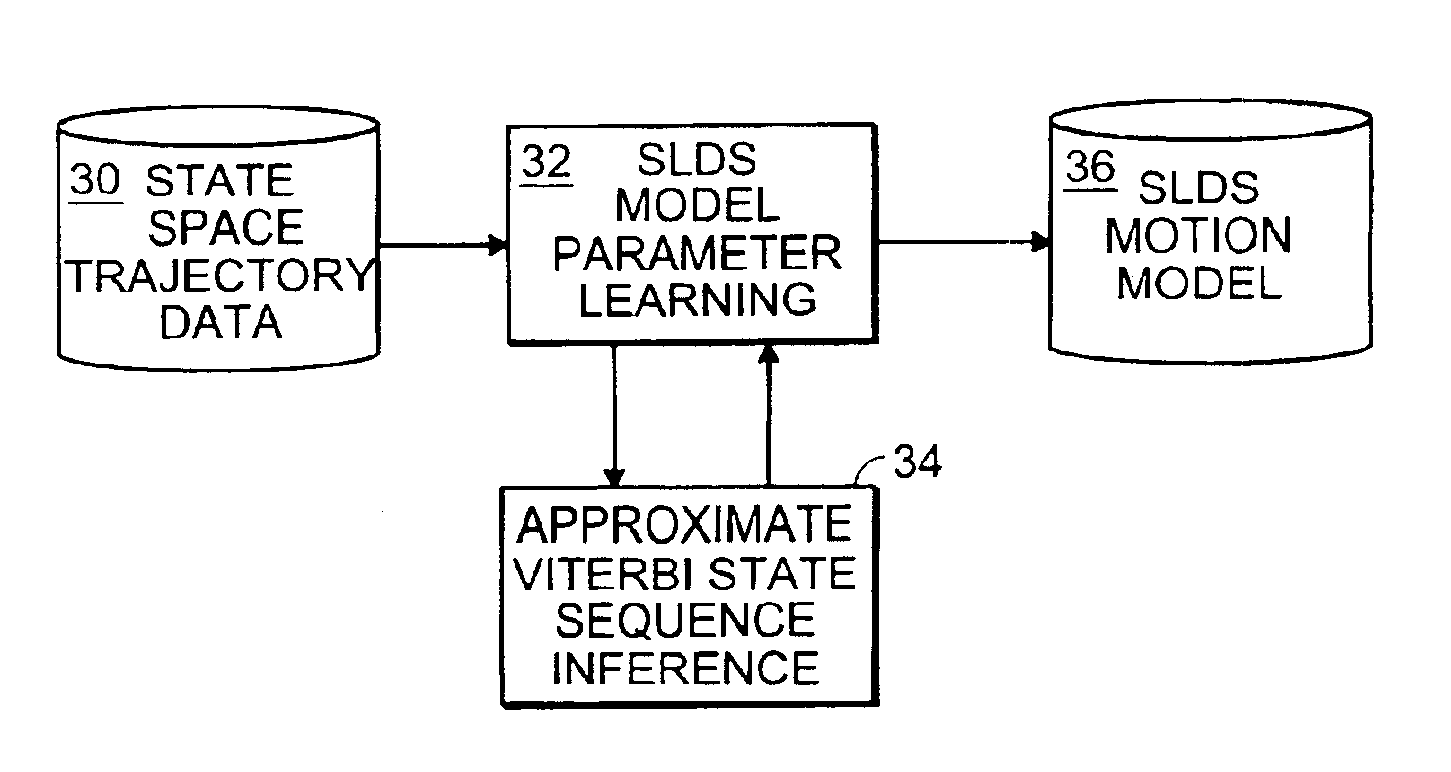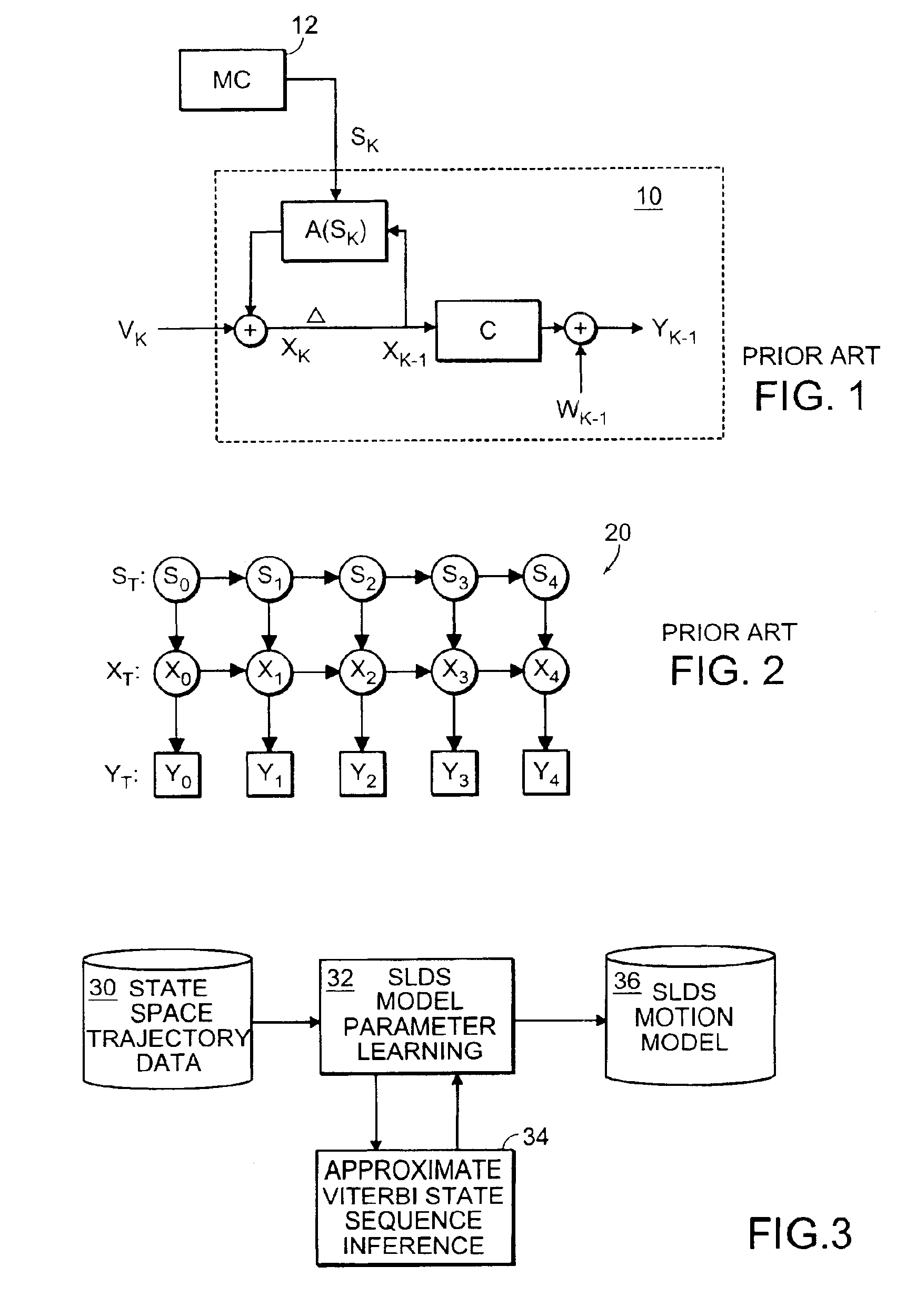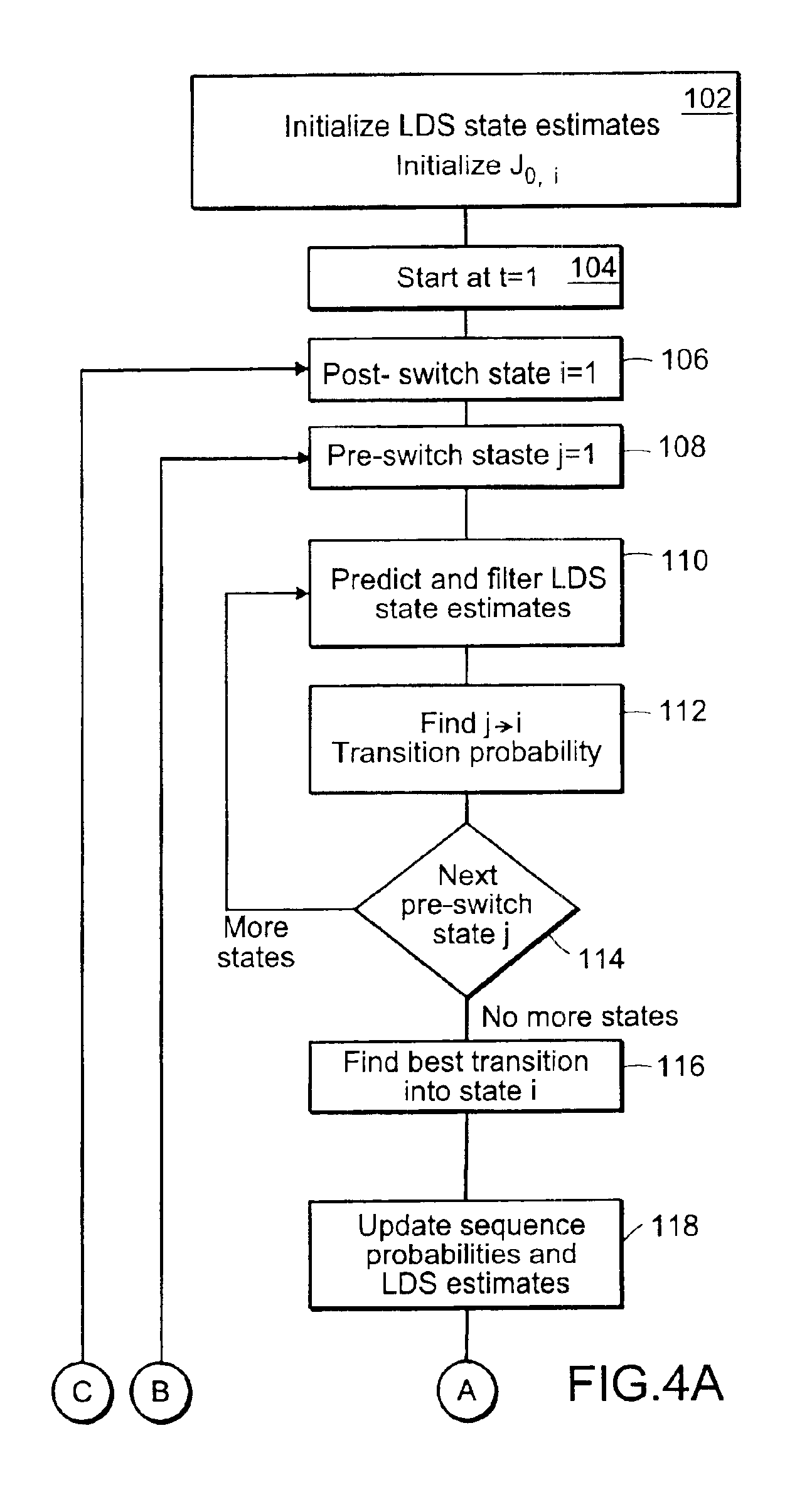Method for visual tracking using switching linear dynamic systems models
a dynamic system model and linear dynamic technology, applied in the direction of optical means, instruments, devices using reradiation, etc., can solve the problems of complicated appearance modeling, difficult tracking, and complicated figure motion
- Summary
- Abstract
- Description
- Claims
- Application Information
AI Technical Summary
Benefits of technology
Problems solved by technology
Method used
Image
Examples
embodiment
General Pseudo Bayesian Inference Embodiment
[0119]The Generalized Pseudo Bayesian (GPB) approximation scheme first introduced in Bar-Shalom et al., “Estimation and Tracking: Principles, Techniques, and Software,” Artech House, Inc. 1993 and in Kim, “Dynamic Linear Models With Markov-Switching,” Journal of Econometrics, volume 60, pages 1-22, 1994, is based on the idea of “collapsing”, i.e., representing a mixture of Mt Gaussians with a mixture of Mr Gaussians, where r2 Gaussians over all times.
[0120]GPB2 is closely related to the Viterbi approximation described previously. It differs in that instead of picking the most likely previous switching state j at every time step t and switching state i, we collapse the M Gaussians (one for each possible value of j) into a single Gaussian.
[0121]Consider the filtered and predicted means {circumflex over (x)}t|t,i,j and {circumflex over (x)}t|t−1,i,j, and their associated covariances, which were defined previously with respect to the approxima...
PUM
 Login to View More
Login to View More Abstract
Description
Claims
Application Information
 Login to View More
Login to View More - R&D
- Intellectual Property
- Life Sciences
- Materials
- Tech Scout
- Unparalleled Data Quality
- Higher Quality Content
- 60% Fewer Hallucinations
Browse by: Latest US Patents, China's latest patents, Technical Efficacy Thesaurus, Application Domain, Technology Topic, Popular Technical Reports.
© 2025 PatSnap. All rights reserved.Legal|Privacy policy|Modern Slavery Act Transparency Statement|Sitemap|About US| Contact US: help@patsnap.com



